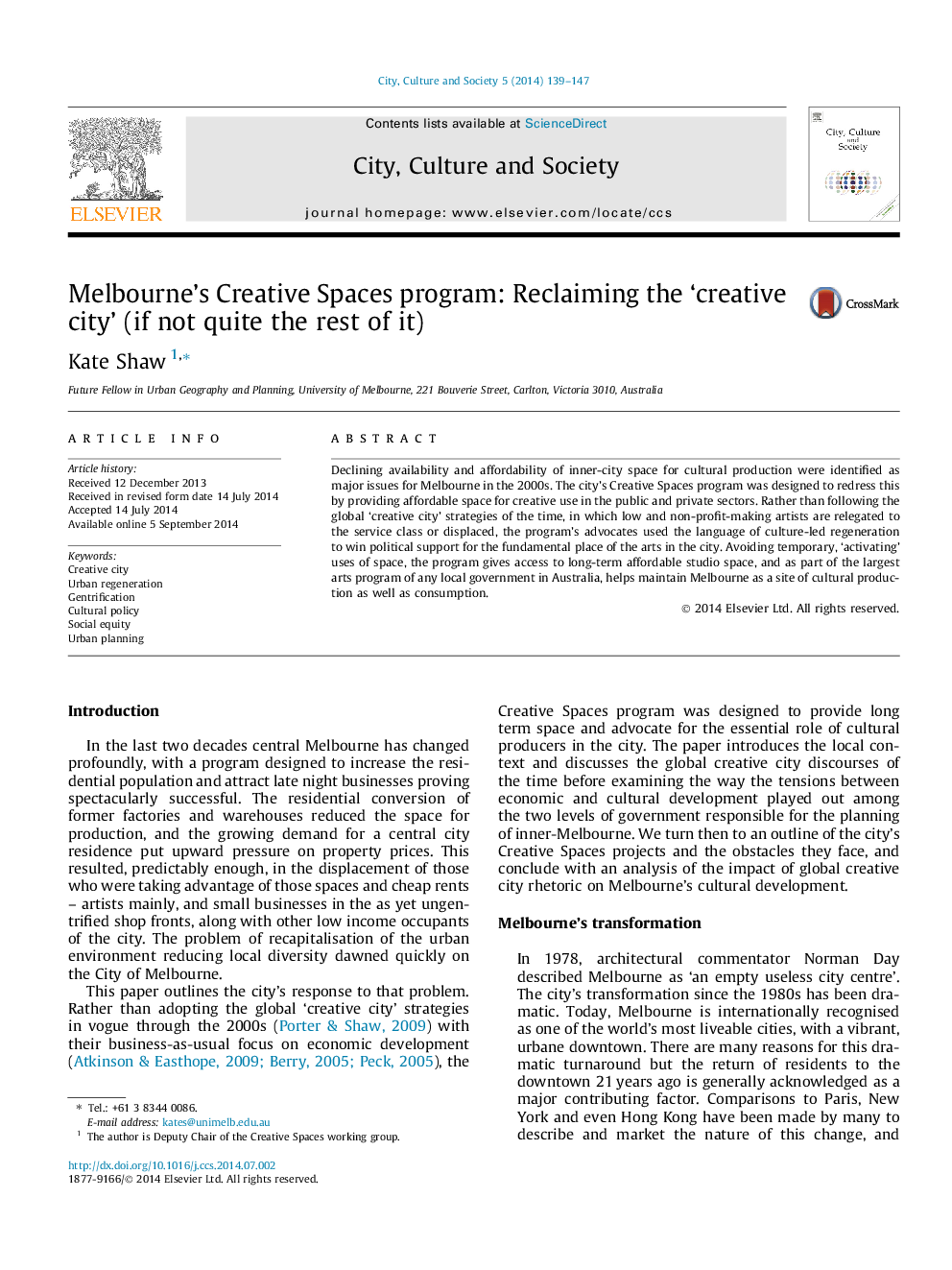| Article ID | Journal | Published Year | Pages | File Type |
|---|---|---|---|---|
| 5048243 | City, Culture and Society | 2014 | 9 Pages |
â¢The paper provides a brief history of Melbourne's cultural development.â¢It reviews theories and contradictions of the creative city in an Australian context.â¢It discusses the impact of urban regeneration on cultural practices.â¢It shows how creative city language pushes neo-liberal agendas.â¢It suggests alternative policy approaches to creative space provision.
Declining availability and affordability of inner-city space for cultural production were identified as major issues for Melbourne in the 2000s. The city's Creative Spaces program was designed to redress this by providing affordable space for creative use in the public and private sectors. Rather than following the global 'creative city' strategies of the time, in which low and non-profit-making artists are relegated to the service class or displaced, the program's advocates used the language of culture-led regeneration to win political support for the fundamental place of the arts in the city. Avoiding temporary, 'activating' uses of space, the program gives access to long-term affordable studio space, and as part of the largest arts program of any local government in Australia, helps maintain Melbourne as a site of cultural production as well as consumption.
